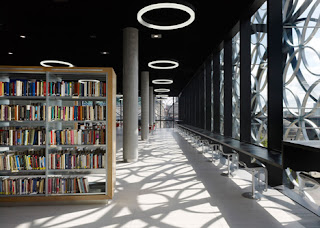The chalet was a gift from his friend, Charles Fechter (1824–79) in
1864, and Dickens used it as a summer study for the rest of his life.
Indeed, it was in the upper room of the chalet that he wrote his last
words on the afternoon of 8th June, 1870.

To
Begin With
Charles John Huffam Dickens was born at 13 Mile End Terrace, Portsmouth
(now the Dickens Birthplace Museum) on Friday, 7th February, 1812. His
father, John, was a clerk in the naval pay office, and Charles’s early
years were spent moving whenever and wherever his father’s postings
dictated. In January 1815, John was transferred to London, and the young
Dickens first encountered the city with which his later life and
fiction would become so indelibly linked. Two years later, the family
moved to Chatham in Kent where Charles enjoyed the happiest years of his
childhood. His mother taught him the rudiments of reading, and he
received an education courtesy of a schoolmaster named William Giles.
Charles also enjoyed long walks through the Kent countryside with his
father.
Life in London
Dickens’s childhood idyll ended abruptly in 1822 when John Dickens was
transferred back to London and his income reduced severely. John, a man
who was never able to live within his means, plunged heavily into debt.
His wife, Elizabeth, attempted to alleviate the family’s financial
predicament by opening a school for young ladies, but that failed and,
in 1824, John Dickens was arrested for debt, and incarcerated in the
Marshalsea Prison. Elizabeth and the younger children went with him.
However, the sensitive Charles was sent to begin work at Warren’s
Blacking Factory.
The young boy, who had truly believed
he was destined to be a gentleman, now found himself sticking labels
onto pots of boot blacking. His misery was exacerbated by the fact that
his beloved elder sister, Fanny, had been enrolled at the Royal College
of Music. Charles longed to resume his education, but left to his own
devices, he roamed the streets of the capital, where he mixed with the
low life of early 19th-century London, taking in everything he saw.
John
Dickens was released from prison after 14 weeks, as his mother-in-law
had died and left him a little money. But he was still not out of debt.
However, in 1825, he took Charles away from the blacking factory, and
despite vociferous objections from Elizabeth, who wanted their son to
continue bringing in a useful weekly wage, John sent him to school at
Wellington House Academy. Charles never forgave his mother.
Dickens
stayed at the Academy for about two years, before his father’s debts
forced him back into employment, this time for Ellis and Blackmore, a
firm of solicitors in London’s Gray’s Inn. Whilst there, he learned
shorthand, and after 18 months felt confident enough to establish
himself as a shorthand writer at Doctors’ Commons, near St Paul’s
Cathedral in the City. By 1830 he had met and fallen madly in love with a
banker’s daughter named Maria Beadnell. A year later he began work as a
reporter for his uncle’s newspaper The Mirror of Parliament. In 1832,
he applied for, and was granted, an audition at the Covent Garden
Theatre, but on the day in question illness prevented him from
attending. Dickens’s love of the theatre and desire to perform remained
with him for the rest of his life and resulted in his amateur
theatricals and later his public reading tours.
Dickens’s
career as writer takes off.
By May 1833, Maria’s ardour had cooled considerably and their
relationship ended. In an attempt to overcome his broken heart Dickens
flung himself into his writing, and at the end of the year his first
story A Dinner at Poplar Walk was published. By 1834 he was working for
the Morning Chronicle newspaper and became friends with its music
critic, George Hogarth. In 1835 Hogarth became editor of the Evening
Chronicle, and he invited Dickens to contribute sketches to the paper.
These would eventually appear in print as Sketches by ‘Boz’. Dickens had
also fallen in love with Hogarth’s daughter, Catherine, and on 2nd
April, 1836 the two were married at St Luke’s Church, Chelsea. Following
a honeymoon in Kent, they settled into chambers in Furnival’s Inn,
Holborn. By this time the first instalment of Pickwick Papers had
appeared, despite the suicide of its originator and illustrator Robert
Seymour. Hablot Browne, who for the next 20 years remained Dickens’s
chief illustrator, replaced Seymour, and when Dickens introduced the
character of Sam Weller, Pickwick Papers became a publishing phenomenon.
In December 1836, Dickens met John Forster, who at the time was the
literary and drama editor of The Examiner. The two became firm friends,
and Forster effectively became Dickens’s agent for the rest of his life
and, following the author’s death, his primary biographer.
The Death That Devastated Dickens
In January 1837, Charles and Catherine’s first child, also named
Charles, was born, and by April the family had moved to a house in
Doughty Street more suited to both Dickens’s growing family and
reputation. Catherine’s younger sister, Mary, moved in with them, and
Dickens developed an intense platonic relationship with her. Then, on
6th May, 1837, Mary died suddenly at their house, leaving Dickens
utterly devastated by the loss.
His Success Increases.
Over the next few years while living at Doughty Street, Dickens cemented
his reputation with Oliver Twist (1837–38), Nicholas Nickleby
(1838–39), and began work on Barnaby Rudge (1841). His family also
increased with two daughters, Mary and Kate, born in 1838 and 1839. By
1839 Dickens’s growing fame enabled them to move to a grander house at 1
Devonshire Terrace, Marylebone. Their fourth child, Walter, was born in
1841, and in January 1842, Charles and Catherine set off on a six-month
tour of America. Such was his fame now that Dickens found himself
mobbed on several occasions. Back in London he wrote Martin Chuzzlewit
(1843–44) and, a year later, what is perhaps one of his best known
works, A Christmas Carol (1843).
A Mid-Life- Crisis
By 1855, with his family swollen to ten children, one of which, Dora,
had died in infancy, Dickens was becoming restless. In February, he
received a letter from Maria Beadnell, now Mrs Winter. He replied
enthusiastically, pouring scorn on her assertion that she was now
toothless, fat and middle aged. ‘You are always the same in my
remembrance’ he wrote. They planned to meet at his house when his wife
was ‘not at home’, but Dickens was shattered to find that Maria was
exactly as she had described herself. His passion cooled and he, rather
cruelly, portrayed her in Little Dorrit (1855–57) as Flora Finching,
once pretty and enchanting, but now fat, diffuse and silly.
Dickens
Buys The House Of His Dreams.
In 1856, he purchased Gad’s Hill Place in Kent, a house he had first
seen whilst walking with his father in the idyllic years of his
childhood. In January 1857, he directed and acted in Wilkie Collins’s
play The Frozen Deep and as he researched professional actresses to play
the female parts, he met the young actress Ellen Lawless Ternan who
became his intimate friend and probably his lover. The following year
Dickens formally separated from his wife, and viciously attacked her in
an article published in several newspapers. His daughter Kate later
recalled, ‘My father was like a madman… He did not care a damn what
happened to any of us. Nothing could surpass the misery and unhappiness
of our house.’ His younger sister-in-law, Georgina Hogarth, became his
housekeeper, and rumours began to circulate that it was his affair with
her that had caused his marital breakdown.
Public
Readings and Secret Lives.
In August 1858, Dickens began the first of a series of reading tours
that would, over the next 12 years, prove extremely profitable. By 1860
Gad’s Hill became his permanent residence. Over the next ten years, as
he and Ellen Ternan became more involved with each other, his personal
life became more and more enigmatic. It is possible that he took a house
in France for Ellen and her mother, where he visited them frequently.
However, Dickens’s secret life came close to exposure in 1865 when he,
Ellen and her mother, were travelling back from France and their train
was involved in a serious accident at Staplehurst in Kent. Although
Dickens tended to the injured and dying, he refused to attend the
subsequent inquest probably for fear it would make public the fact he
was travelling with Ellen Ternan.
The Death of Dickens
Over the next few years, Dickens undertook several private reading tours
in England and America. But his health was failing and by 1870 he
looked considerably older than his 58 years. Then on the 8th June, 1870,
having spent the day working on what was to be his last unfinished
novel The Mystery of Edwin Drood, he collapsed at the dinner table and
died the next evening.
















